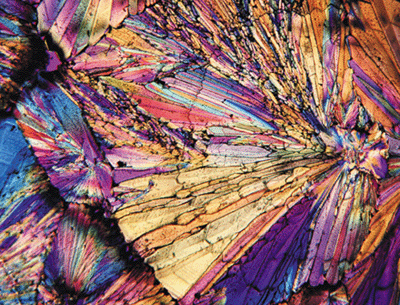Hidden Unity in Nature's Laws
John Taylor
2001 Cambridge University Press 504pp £15.95/$24.95pb

The momentous complexity of modern physics is often seen as a stumbling block whenever one is asked to explain to the wider public – or to new students – how beautiful all of it is, and how unique and compelling are the logical deductions that have led to our present understanding. Many theoretical physicists have tried to do exactly this: to convey to the public not only what their findings are, but also why they think these findings are startling, and how these appear to reveal some deep underlying unity in the laws of physics.
Those who take on this task must act like a musician who wishes to enchant his audience with the beauty of a piece of music that is extremely difficult to play. If his skills are not quite up to the task, the musician might omit some of the most difficult notes or phrases, but in so doing he is sure to mutilate the composer’s masterpiece – even if the audience in question might not notice anything amiss. The truly professional musician, of course, manages to play even the most difficult parts in such a way that the message comes across in full, and the listener only hears the beauty of it, without even noticing that the piece is hard.
Modern physicists are in a worse position than musicians. Most physical theories have to be drastically reformulated before one can even think of making them digestible for non-experts. In Hidden Unity in Nature’s Laws, John Taylor attempts to do just this. However, he has chosen his musical instruments carefully. Galileo’s findings and Newton’s laws are usually taught using modern terminology, as this will surely carry us further when we arrive at the intricate structures of contemporary physics. Taylor, in contrast, exploits the fact that purely geometrical arguments can be pictured rather vividly.
Such an approach certainly works for the “old” physics, but can one use geometry to describe Maxwell’s laws of electromagnetism, quantum mechanics or the interactions between subatomic particles? What does gauge invariance mean in geometrical terms? What is the geometry of Heisenberg’s uncertainty relations? To explain all of this using practically no formulae at all should be considered an art form. Indeed, geometry can be used to argue that the number of particles inside the heaviest white dwarfs is related to the number of particles inside the heaviest allowable planets as 137 x (137)1/2, give or take a coefficient of order one.
What makes this book attractive for the professional physicist – as the well as the layreader – is its rich array of historical facts, references and descriptions of the achievements of past researchers, some of whom are not widely known. It is good to show respect for these scientists, given how much they had to struggle to discover those feats that nowadays are so commonplace to us.
It was not obvious at all, for example, that the Sun – not the Earth – had to be at the centre of the planetary system, and that the planets do not move in circles at fixed distances from us. It is delightful to read about the heated discussions on the nature of light between Newton and Huygens.
A problem with this approach is that the reader does expect the historical information to be accurate. For example, Taylor refers to Karl Schwarzschild as “at least one person who [already in 1916] quickly understood Einstein’s theory [of general relativity]”, and then continues to describe the co-ordinates used in our modern notation as the ones invented by Schwarzschild. Although it is universally accepted that Schwarzschild discovered the black-hole solution, if you read his paper you find out that, yes, he did understand the equations, but no, not the theory. Indeed, he made a big point of using “correct co-ordinates”, that is the ones where the black-hole horizon is imaged at the origin. This requirement would, he thought, have physically observable consequences. Naturally, Schwarzschild did not immediately understand the peculiar physics of the horizon.
Elsewhere, we read about the famous measurements of the speed of light carried out by the 17th-century Danish astronomer Ole Rømer. However, the values the author gives for the distance between the Sun and the Earth and for the time that light takes to travel this distance are incorrect by a factor of two. I think that astronomers of the time knew these numbers better than that even then.
A few other minor criticisms also spring to mind. Both from a historical and a conceptual point of view, it is a bit odd to discuss quantum chromodynamics and its basis in the Yang-Mills equations before the electroweak theory. Peter Higgs, meanwhile, did not introduce the four-scalar field components in the Standard Model of particle physics; he introduced the general principle now called the Higgs principle only for the U(1) case. Good accounts of the history of these developments can, however, be found elsewhere – both at the professional level in the proceedings of several recent Erice summer schools, and in a very journalistic style by Robert Crease and Charles Mann in their delightful book The Second Creation (1986 Macmillan).
I also found many of the figures in Taylor’s book to be poor and rather too sketchy, as if they were redrawn by someone who had little understanding of what they were supposed to convey. I like my parabolas to look like parabolas and my sine curves to look like sine curves.
But these are minor points. What makes this book extremely valuable is that the author has succeeded in adhering to his geometric approach throughout, starting with Galileo and ending with Ed Witten and Stephen Hawking. He explains their discoveries in physics in a lucid way using hardly any formulae, while avoiding over-simplifications and lacing the narrative with fascinating historical details.
Buy the book
Hidden Unity in Nature’s Laws: Amazon UK/Amazon US



